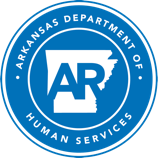The U.S. Department of Health and Human Services, Centers for Medicare and Medicaid Services (HHS CMS) measures the accuracy of Medicaid payments across all states through its Payment Error Rate Measurement (PERM) Project. As a part of this requirement, HHS CMS selects 800 to 1000 Medicaid claims from the total paid throughout the year. Providers are then required to submit documentation for review by CMS contractors.
The review process consists of medical record reviews, payment system reviews, and client eligibility determination reviews. The purpose is to ensure services billed to Medicaid are medically necessary and documented in accordance with Medicaid policy as well as federal and state regulations. It is therefore imperative all services are documented properly, accurately, and with enough information for CMS contractors to determine that the service was medically necessary and appropriate.
CMS contractors visit the DHS website and review payments in the Medicaid Management Information System (MMIS). The review assures services are given by providers and staff who are properly certified and/or licensed and that the services are paid properly. A sample of clients determined to be eligible and those who were denied are selected for review as well; this helps ensure the Department was correct in its actions.
Any claims determined to be paid in error must be repaid; CMS then determines the state’s annual error rate. The error rate affects how many future claims will be sampled for review and could lead to lowering a state’s Medicaid match. Currently, Arkansas has an exceptionally good Medicaid match of 75%, or 3 to 1. If the error rate becomes high enough to alarm HHS CMS, the match rate for ALL Medicaid services in Arkansas could be reduced, not just for Counseling Services. For this reason, the pressure to keep the error rate low is tremendous.
- How do I determine if my rendering provider needs an NPI or a PIN?
- How can I request a Practitioner Identification Number (PIN)?
- Where do we insert the individual provider NPI in the electronic bill?
- Do we stop all bundling of billed events?
- Do we break out Rehab Day Services and Acute Day Treatment segments as described here?
- Is there any impact on the Daily Note? Can we continue to have the “lead” para for that client write and sign a single Daily Note?
- Regarding the requirement in Section 218.000 of the OBHS provider manual that the treatment plan must be “signed by…agency staff members who will provide specific treatment interventions…” That requirement only applies to U-21 plans, right?
- Do even more staff need to sign the treatment plan?
- Is there any requirement for STAFF other than the Primary Therapist and the Physician to sign an adult OBHS review?
- Does every staff member in the Rehab Day Services program have to sign the review for a U-21 client?
How do I determine if my rendering provider needs an NPI or a PIN?
View Section 211.200 – Staff Requirements in the Counseling Services provider manual.
How can I request a Practitioner Identification Number (PIN)?
To request a Practitioner Identification Number (PIN), complete request form DMS-7708. View or print a completed sample DMS-7708 for guidance.
Where do we insert the individual provider NPI in the electronic bill?
The loops have not changed. Use the following loops to list the performing provider information:
- 2310B (if all of the performing provider numbers are the same;
- 2420A (if each detail performing provider is different);
- 2310D for satellite offices.
For example:
- John Doe, LCSW, has provided all services to be claimed for Sue X. on 8/31/08. Enter John Doe’s NPI number in field 2310B.
- During an 8-hour day on 8/31/08:
- John Doe, LCSW, provided 2 units of on-site intervention in the morning.
- Jane Doe, MHPP, provided 6 units of Rehab Day throughout the day.
- Joe Doe provided 5 units of Rehab Day throughout the day on 8/31/08.
- John Doe, LCSW provided another unit of on-site intervention during the afternoon.
- Sally Doe, LAC, provided 3 units on-site intervention toward the end of the day.
List each detail on the claim as follows:
- John Doe, LCSW, 3 units; enter John’s NPI in loop 2310B
- Jane Doe, MHPP, 6 units; Jane has an NPI, so enter her NPI in loop 2310B
- Joe Doe, MHPP, 5 units; Joe has not obtained an NPI, but has a Medicaid PIN ending in 95, so enter his Medicaid PIN in loop 2310B
- Sally Doe, LAC, 3 units; enter Sally’s NPI in loop 2310B.
Continue on until all 48 units have been detailed. Please note that when rounding direct services, the units to be claimed cannot exceed the time the client received face-to-face services. When you accumulate the individual performing provider’s minutes, you may have to get as close as possible without going over.
Do we stop all bundling of billed events?
“Cumulative billing” will still be accepted using current requirements for claims with the same date of service, service/billing codes, client ID, and individual provider ID. (The term “bundling” has many connotations in the Medicaid world and it would be best to use the term “cumulative billing” for this scenario.)
Do we break out Rehab Day Services and Acute Day Treatment segments as described here?
Documentation must show which staff provided what service, even within the Rehab Day Service program. We have discussed at length a solution which considers both providers’ needs and also meets state and federal requirements. The primary intent here is to be able to know from the clinical documentation and also the claims form who provided services to a particular client on a particular day.
For example, assume four paraprofessionals are responsible for the provision of the Rehab Day Service program. You would assign a “primary para” who would be responsible for documenting (Daily and Weekly Note) on a particular client. If para 2, 3, and 4 also provided some service to that client then primary para 1 would note on the Daily Note the times each para provided the service.
At the end of the week each para who provided service would initial to validate that they did indeed provide service for the stated times/dates. But there could still be one note as there is now. The billing claim would have to indicate all of the individuals who provided a service on that date. You could use your judgment in allotting the specific times for the various paras who provided the rehab day service (i.e., if there were 8 hours of rehab day and 4 paras, then bill 2 hours for each). Again, the intent is to know from the clinical documentation and also from the claims form who provided services to a particular client on a particular day.
If para 2 covers for para 1 during a short break, there would be no need to “stop services” and start again to reflect a different staff member. This would be a bit flexible. You will continue to use the 15 minute units and round as outlined in the Medicaid manual closely as possible without billing more units for direct services in a given hour or day than could be provided. You cannot bill 3 units of direct services in 30 minutes, etc.
Is there any impact on the Daily Note? Can we continue to have the “lead” para for that client write and sign a single Daily Note?
Yes, only a slight modification has been made to the Daily Note. The lead para will now note which other staff provided Rehab Day Service for that client with estimated time of service. Individuals noted as providing service to that client will initial at the end of the day verifying they provided the service. They do not need to write a separate note. The same procedure described above will be used with the Weekly Note.
Regarding the requirement in Section 218.000 of the OBHS provider manual that the treatment plan must be “signed by…agency staff members who will provide specific treatment interventions…” That requirement only applies to U-21 plans, right?
Correct. No changes were made to the treatment plan or treatment plan update for adults.
Do even more staff need to sign the treatment plan?
No changes have been made in signature requirements for adults. It is assumed as all staff must document toward treatment goals they will have a working knowledge of the treatment plan. Therefore, signatures themselves are not required.
Is there any requirement for STAFF other than the Primary Therapist and the Physician to sign an adult OBHS review?
No changes have been made in signature requirements for adult treatment plan or treatment plan review. It is assumed as all staff must document toward treatment goals they will have a working knowledge of the treatment plan. Therefore, signatures themselves are not required.
Does every staff member in the Rehab Day Services program have to sign the review for a U-21 client?
Providers should continue to follow the U-21 policy set forth in the OBHS manual.



